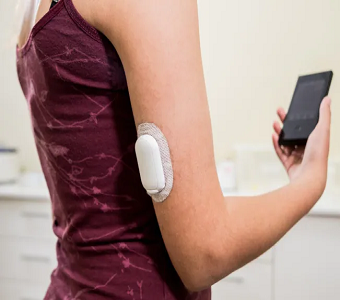In mid-March 2023, Pfizer acquired Seagen (SGEN) for $43B, making it the largest biopharma transaction in three years. Seagen, considered the leader in antibody-drug conjugate (ADC) technology, has 3 out of the 12 approved ADCs in the market. Pfizer forecasts the acquisition will bring in $10B in revenue by 2030. Following the deal, the ADC field has seen additional positive data readouts and big pharma interest, which has drawn investor attention and spilled over into public ADC companies that stand to benefit.
Understanding ADC Basics Support Upside
ADCs combine (1) a monoclonal antibody directed against a tumor target, (2) a cancer killing cytotoxin (called payload) and (3) a linker connecting the payload to the antibody. The idea is to have one compound with the selectivity of monoclonal antibodies and cancer killing properties of chemotherapy.
The antibody’s function is to direct the ADC carrying the toxic payload to a tumor cell. The ADC binds to the tumor antigen and is absorbed by the tumor cell. Once inside, the linker breaks apart, releasing the toxic payload and killing the cancer cell.

ADCs have the potential to provide the best of both worlds (selectivity + toxicity), which is why many experts believe that ADCs could become the standard of care in many solid cancer indications, replacing chemo and antibodies. This was the basis for Pfizer’s $43B bet on Seagen and its $10B in projected revenue.
However, because there are multiple moving pieces with ADCs, delivering the right combination of an antibody target, linker and payload is a work in progress. ADCs that use a weak linker can prematurely release their toxic payload, which can damage healthy tissues and lead to an unfavorable toxicity profile, a common burden.
Characteristics of Next-Gen ADCs?
The ADC landscape is full of engineering advances that have introduced a new generation of targeted drugs distinguished by novel linkers and new payloads. Next-gen ADC platform include:
1. Effective linkers to improve stability in the bloodstream and allow for ADC absorption into tumor cells.
2. New classes of payloads considered less potent to minimize toxicity and compensate for the weaker potency with higher concentration. The measure used is the drug-to-antibody ratio (DAR), which is the number of payload molecules carried by each antibody. Having a high DAR (>5) allows for the use of less cytotoxic drugs by increasing the number of payload molecules.
The latest approaches are delivering topoisomerase I (TOP1) inhibitors. The FDA approved Enhertu and Trodelvy for HER2- and TROP2-expressing solid tumors that use a TOP1 payload mechanism.
3. Novel antibody targets to lower off-target toxicity effects and target new tumor antigens. Claudin 6 and Claudin 18.2 are two targets in early-stage trials drawing investor/big pharma interest. Proof of concept data is expected for targets B7-H3, CDH6 and integrin beta-6 by 1H 2023 (more below). Already validated targets HER2 and Nectin-4 are seeing next-gen ADC engineering through linker/payload advancements.
Approved ADCs

ADC Trends & Developments
The Next Hot Targets
AstraZeneca licensed anti-claudin18.2 ADC, CMG901, from Chinese company KYM Biosciences for $63M upfront. CMG901 is currently in a Phase I trial in China for Claudin 18.2-positive solid tumors, including gastric cancer, and preliminary results presented suggested an ORR of 75% (n=8).
TORL Biotherapeutics raised $158M in a Series B for Claudin18.2 and Claudin 6 ADC
TOP1 Inhibitor Payload ADCs Are Coming
At AACR2023, Jiangsu Hengrui Pharma reported preliminary data on SHR-A1811, an ADC comprised of anti-HER2 target, a cleavable linker, and a TOPI inhibitor payload. In 250 patients who had undergone a median of 3 prior treatments, an ORR of 81.5% (88/108) was reported in in HER2+ breast cancer and ORR of 55.8% in HER2-low breast cancer (43/77).

Why Is This Important? Keep in mind that Enhertu, a HER2 ADC with a TOP1 inhibitor payload, generates more than $1B annually for Daiichi/AstraZeneca.
The high ORR in the heavily pretreated group is a promising efficacy point that validates other TOP1 inhibitor payloads, in addition to Enhertu. However, the Phase 1 study had its own limitations. First, 3 people died of treatment related side effects, which is a toxicity feature that will need to be figured out with dose optimization and side effect management before the HER2 ADC hits commercial markets. Additionally, treatment duration data also needs to reported to make a direct comparison to Enhertu. Although early data showed promise, Enhertu’s dominance in the HER2 space is safe for the time being.
Upcoming ADC Catalyts

Public ADC Companies That Stand to Benefit

Corbus Pharma (Nectin-4-antibody + MMAE payload)
Corbus licensed a next-gen version of already approved Padcev, Seagen/Astellas’ nectin-4 ADC with MMAE payload, from Chiense CSPC. CRB-701 is designed to have better stability of the proprietary linker and a reduced drug to antibody ratio of 2 vs 4 in Padcev. Compared with Padcev, CRB-701 showed higher or similar anti-tumor efficacy at the same dose level in all the in vivo cancer models.
Pyxis Oncology (Extradomain-B antibody + auristatin payload)
Pyxis’ ADC candidate was built on Pfizer’s platform and licensed by the company in 2021. PYX-201 is designed to optimize linker stability to enable delivery of the auristatin payload without internalization of the ADC into the cancer cell. Unlike currently approved ADCs which bind to the tumor cell surface, PYX-201 is designed to deliver the auristatin payload to the tumor-microenvironment consisting of tumor cells, stromal cells and the surrounding blood vessels.
Bicycle’s Peptide Conjugates Less Potent Than ADCs?
Although not technically ADCs, Bicycle (BCYC) has a pipeline of peptide-drug conjugates which are smaller than antibodies and have shown to be selective and potent oncology candidates. Bicycle’s BT8009 is targeting nectin-4 with an MMAE payload, a similar makeup to Seagen/Astellas’ Padcev. In urothelial bladder cancer, BT8009 has demonstrated activity and tolerability. However, BT8009’s regulatory pathway is a question mark that might require additional studies before approval. Additionally, the negligible efficacy beyond bladder cancer puts into question whether Bycicle’s peptide conjugates share same potency as ADCs.
Disclosure: PropThink contributors do not hold positions in any of the names mentioned
Access This Content Now
Sign Up Now!




